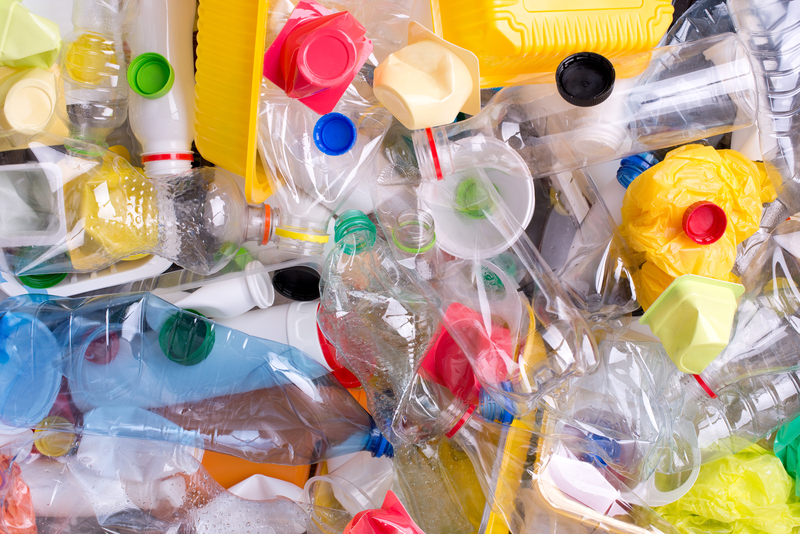Smart Strategies for Safe PPE Waste Disposal
Personal Protective Equipment (PPE) has become an indispensable element in our daily lives, especially following the COVID-19 pandemic and rising environmental concerns. With billions of PPE items used worldwide each day, improper PPE waste disposal poses hazards to public health and the environment. Instituting smart, safe, and sustainable PPE waste management solutions is crucial for everyone from healthcare providers and industrial workers to individuals at home. Here, we provide a comprehensive guide on safe PPE waste handling, highlighting disposal strategies, recycling innovations, compliance measures, and global best practices.

Why Safe PPE Waste Disposal Matters
Personal Protective Equipment waste is not like regular household garbage. It often contains traces of biological or chemical contaminants that can pose risks to sanitation workers, waste handlers, and the wider community if not handled properly. The spike in disposable PPE usage--including masks, gloves, gowns, and face shields--has dramatically increased the volume of waste, with visible impacts on the environment and public health.
- Health Risks: Discarded PPE can harbor infectious germs, putting people and wildlife at risk of exposure or ingestion.
- Environmental Impact: Many PPE items are made from non-biodegradable plastic polymers, contributing to growing plastic pollution in landfills and waterways.
- Legal Implications: Mishandling PPE waste may breach local or international biomedical waste regulations, exposing organizations to hefty fines and reputational damage.
Understanding PPE Waste Types
Effective and safe PPE waste management begins with categorizing different types of PPE and recognizing which require special handling:
- Single-use disposable PPE: Surgical masks, nitrile gloves, disposable gowns, plastic face shields, and shoe covers.
- Reusable PPE: Cloth masks, some protective eyewear, and reusable rubber gloves (when designated as waste).
- Hazardous PPE: Items contaminated with biological fluids, chemicals, or used in high-risk environments (e.g., hospitals, chemical plants).
- Non-hazardous PPE: PPE used in low-risk settings without direct contamination.
Proactive identification and labeling of PPE waste according to type ensures correct downstream handling and reduces cross-contamination risks.
Key Principles for PPE Waste Disposal
Safe PPE waste disposal must be systematic, secure, and adhere to best practices. Here are the foundational principles:
- Segregation: Always separate PPE waste from regular garbage and other medical or chemical wastes at the point of disposal.
- Containment: Use designated color-coded or clearly labeled bins and bags to collect used PPE.
- Controlled Transport: Securely transport PPE waste for final treatment--never leave it in unsupervised public areas.
- Disinfection: Where appropriate, disinfect PPE waste prior to disposal to reduce the risk of infection.
Smart Bin Placement and Design
Placing PPE waste bins in strategic, high-traffic locations (entrances, exits, restrooms, hospital wards) maximizes compliance and reduces littering. Smart bin features may include:
- Hands-free sensors or foot pedals to minimize contact.
- Clear signage and instructions on what can be discarded.
- Lockable, leak-proof designs to contain hazardous materials.
Effective Strategies for Safe PPE Disposal
1. Implement Waste Stream Segregation
Segregation is the first and most important step in PPE disposal. Use the following approach:
- Color-code bins for different types of waste (e.g., red for infectious, yellow for chemical, black for non-hazardous waste).
- Label bins using symbols and text.
- Train staff to recognize and route different PPE items accordingly.
2. Utilize Smart Disposal Technologies
Technology-driven PPE waste disposal can minimize human error and improve safety:
- Sensor-enabled bins: These ensure touchless disposal and monitor fill-levels, reducing overflow and encouraging timely collection.
- Barcode or RFID tracking: Track waste collection and removal digitally, ensuring traceability throughout the waste chain.
- On-site disinfection units: Use ultraviolet (UV) sterilization or chemical disinfection before collection to reduce pathogen spread.
3. Adhere to Proper PPE Waste Collection and Handling
PPE waste must be collected by trained personnel using appropriate safeguards:
- Don new PPE before handling used items.
- Avoid direct contact--use tongs or dedicated tools.
- Double-bag highly contaminated PPE waste for extra protection.
4. Emphasize the Role of Training and Education
Awareness and education are vital for compliance:
- Regularly update staff and users about safe PPE disposal practices.
- Use posters, video tutorials, and signage to reinforce key messages.
- Hold training sessions and drills for high-risk environments (e.g., healthcare facilities, laboratories).
5. Coordinate with Licensed PPE Waste Disposal Services
Engage reputable, licensed waste management providers to handle the final treatment and disposal of PPE waste. These experts:
- Handle logistics, treatment, and documentation.
- Offer compliance reports and certificates of safe disposal.
- Advise on the latest regulatory requirements and best practices for disposing PPE waste safely.
Innovative PPE Waste Recycling and Reduction Strategies
While landfill disposal and incineration are the traditional endpoints for most PPE waste, there is growing innovation in sustainable PPE management:
Recycling Disposable PPE
Recent technological advances make it possible to recycle certain PPE, especially masks and gowns, into raw materials for construction, furniture, or road construction. Key steps include:
- Pre-sorting and disinfection: Ensuring only uncontaminated items enter the recycling stream.
- Dedicated recycling bins: Clearly mark and isolate recyclable PPE from other waste streams.
- Partnerships with recycling companies: Collaborate with specialized recyclers that process PPE into usable materials.
For example, some companies convert used face masks into plastic pellets, which are then re-manufactured into benches or road surfacing.
Promoting Reusable PPE Alternatives
- Encourage the use of washable, reusable PPE where safety guidelines allow (e.g., cloth masks for the general public).
- Implement robust laundering systems to ensure reusables are thoroughly decontaminated.
- Train users on the proper care and replacement of reusable PPE to extend lifespan and reduce waste.
Source Reduction and Smart Purchasing
Reducing unnecessary PPE use at the source cuts potential waste. Strategies include:
- Assess risk and only use single-use PPE when absolutely necessary.
- Purchase PPE made from recyclable or biodegradable materials.
- Select suppliers and brands focused on sustainability and minimal packaging.
Legal and Regulatory Compliance
Ensuring PPE waste disposal meets legal requirements is both a legal and ethical responsibility. Key regulations governing PPE waste include:
- OSHA guidelines: Mandate safe handling of waste in occupational settings in the U.S.
- Environmental Protection Agency (EPA) rules: Regulate hazardous waste and air quality from incineration.
- International Health Regulations: For hospitals and organizations with transboundary waste concerns.
- National and municipal bylaws: Each jurisdiction may have unique rules on PPE segregation, packaging, and disposal.
Non-compliance can result in fines, workplace shutdowns, or even criminal charges in serious cases. Regular audits, clear documentation, and engagement with regulatory authorities ensure your PPE disposal program is up to date.
PPE Waste Documentation and Reporting
- Track waste volumes: Monitor the amount of PPE waste generated, recycled, and disposed of.
- Maintain compliance logs: Record staff training, waste pickups, and disposal certificates.
- Annual reviews: Audit your PPE waste management strategy to find gaps or improvements.
Global Best Practices: Case Studies in PPE Waste Disposal
Hospitals & Healthcare Facilities
Many hospitals implement centralized PPE waste collection programs, featuring:
- Dedicated disposal points throughout hospital wards.
- On-site autoclaving or incineration for biohazardous PPE.
- Collaborative PPE recycling pilots with manufacturers or environmental NGOs.
Industrial & Laboratory Settings
- Mandatory pre-entry and exit doffing stations for PPE with clear disposal instructions.
- Use of personalized PPE kits to minimize excess waste.
- Strong labeling, signage, and staff incentives for compliance.
Community and Public Sector Initiatives
- Municipal PPE waste bins in public places (e.g., bus stations, marketplaces).
- Awareness campaigns on correct disposal of masks and gloves at home.
- Pilot programs for mask recycling or compostable alternatives.
Actionable Tips for Safe PPE Waste Disposal at Home
Even outside professional settings, everyone plays a vital role in proper PPE disposal. Here's how you can contribute:
- Do not litter: Never throw used masks or gloves on the ground.
- Bag and seal: Place used PPE in a plastic bag, tie securely, and place in the designated waste bin.
- Mark COVID waste: If anyone in your household is sick, clearly mark PPE waste and inform disposal personnel.
- Wash hands: Always sanitize after handling used PPE, even if you wore gloves.

Future Trends: Smart and Sustainable PPE Waste Solutions
Emerging innovations are poised to transform how we manage PPE waste going forward:
- Biodegradable PPE: New mask and glove materials decompose naturally, minimizing environmental impact.
- AI-powered collection systems: Use data and robotics to optimize disposal bin placement, collection schedules, and recycling.
- Circular economy models: Manufacturers take back used PPE for reprocessing, closing the waste loop.
- Blockchain for waste traceability: Secures data on the entire lifecycle of PPE, from usage to final disposal or recycling.
It is essential to stay updated with advancements in the industry and proactively adopt safe and efficient disposal strategies at every level.
Conclusion: Building a Safer, Cleaner Future with Smart PPE Waste Disposal
Smart and safe PPE waste disposal is not only about risk mitigation--it's about taking collective responsibility for community health and environmental sustainability. By implementing systematic waste segregation, leveraging smart disposal technologies, embracing recycling, complying with regulations, and fostering public awareness, we can curb the negative impacts of PPE waste. As innovations advance, staying informed and adaptable will empower organizations and individuals to effectively manage PPE waste and build a safer future for all.
Remember: Every mask, glove, or gown disposed of correctly is a step towards protecting our communities and ecosystem. Make smart PPE disposal a daily priority!